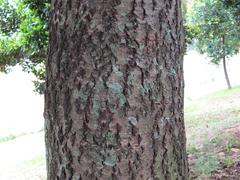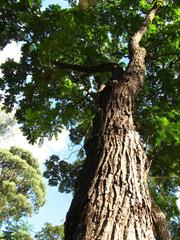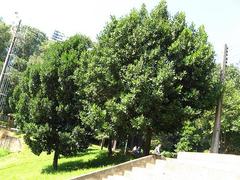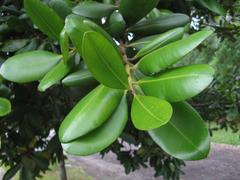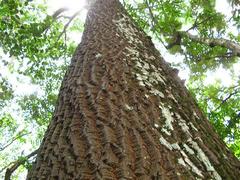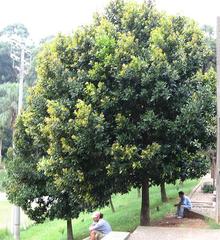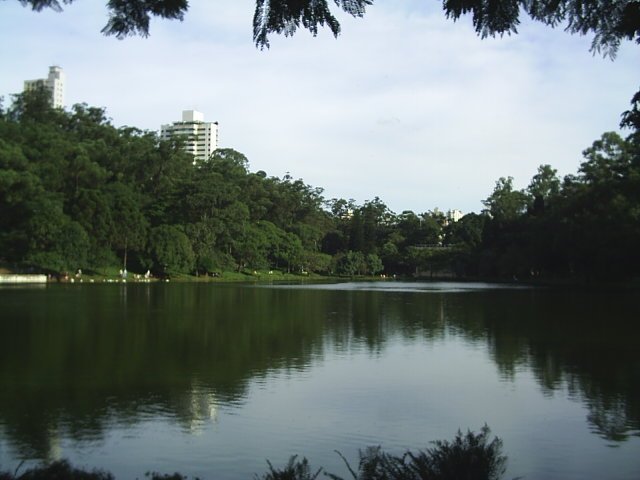
Parque da Aclimação: Visiting Hours, Tickets, and Guide to São Paulo’s Historic Urban Park
Date: 14/06/2025
Introduction
Parque da Aclimação is one of São Paulo’s most cherished urban parks, offering an oasis of greenery, history, and culture amid the city’s bustling landscape. Established in 1892 by Dr. Carlos Botelho, inspired by Paris’s Jardin d’Acclimatation, the park has evolved from a pioneering site for acclimatizing exotic species and agricultural innovation to a beloved public space central to the identity of the Aclimação neighborhood. Today, it invites locals and tourists to explore its historical legacy, natural beauty, and cultural amenities free of charge, reflecting São Paulo’s commitment to preserving essential green spaces (Wikipedia - Parque da Aclimação; Prefeitura de São Paulo; ParqueMunicipal.com).
Historical Overview
Origins and Early Development
Parque da Aclimação originated in the late 19th century when Dr. Carlos Botelho acquired the Sítio do Tapanhoin estate. Inspired by his experiences in Paris, Botelho envisioned a space for acclimatizing exotic animal and plant species, establishing São Paulo’s first zoo, a dairy farm, and leisure areas. Notably, the park quickly became a social and scientific hub, featuring animals such as bears, lions, and a polar bear, a canoeing lake, and recreational facilities (VejaSP).
Transition to Public Park
As São Paulo urbanized, the Botelho family began subdividing the estate, which spurred the development of the surrounding neighborhood. By 1939, the city government, under Mayor Francisco Prestes Maia, acquired the remaining parkland, officially opening Parque da Aclimação as a public park. This transition secured its continued role as a communal gathering space and marked it as São Paulo’s second official park after Jardim da Luz (Wikipedia - Parque da Aclimação).
Challenges and Heritage Protection
Over the decades, the park faced pressures from urban development, resulting in a reduction of its area and periods of neglect. In the 1980s, community activism led to its heritage protection by CONDEPHAAT in 1986, a milestone that safeguarded its historical, ecological, and social significance for future generations (ParqueMunicipal.com).
Cultural and Social Significance
Parque da Aclimação is woven into São Paulo’s cultural fabric. Street names in the neighborhood reflect natural and celestial themes, and the park serves as a venue for community events, recreation, and environmental education. The Biblioteca Temática de Meio Ambiente Raul Bopp, with over 33,000 volumes, supports educational programming focused on sustainability. Additionally, three significant Arcângelo Ianelli sculptures—Dança Brancos, O Retorno, and Forma Corrompida—enrich the park’s artistic landscape (Prefeitura de São Paulo).
Ecological Features and Biodiversity
Flora
Spanning approximately 112,000 square meters, the park is a biodiversity hotspot, featuring more than 125 species of vascular plants, including rare and endangered trees such as cedro (Cedrela fissilis), pau-brasil (Paubrasilia echinata), and pinheiro-do-paraná (Araucaria angustifolia). The arboretum includes native and exotic species, contributing to São Paulo’s ecological health (ParqueMunicipal.com).
Fauna
Parque da Aclimação supports over 80 animal species, including more than 40 bird species like herons, parakeets, and rufous horneros, as well as mammals and amphibians. The central lake attracts aquatic birds and provides a habitat for diverse urban wildlife (ibnbattutatravel.com).
Urban Ecological Role
The park mitigates São Paulo’s urban heat island effect, supports pollinators, absorbs stormwater, and enhances air quality, making it a vital ecological refuge within the city.
Facilities and Amenities
- Lake and Japanese Garden: Scenic spaces for relaxation and birdwatching; the Japanese garden features koi fish and traditional landscaping.
- Walking and Jogging Tracks: Dedicated circuits for exercise.
- Playgrounds and Picnic Areas: Safe environments for children and families.
- Outdoor Gym and Sports Fields: Fitness equipment and fields for football and volleyball.
- Library: Biblioteca Temática de Meio Ambiente Raul Bopp, a hub for environmental education.
- Art Installations: Permanent sculptures by Arcângelo Ianelli.
- Accessibility: Ramps, accessible restrooms, and designated parking for visitors with reduced mobility.
- Dog Park (Cachorródromo): Dedicated area for pets.
- Security and Cleanliness: Staff and security personnel maintain a safe and pleasant setting.
- Free Wi-Fi: Digital inclusion for visitors.
Visitor Information
Visiting Hours and Tickets
- Hours: Open daily, generally from 6:00 AM to 6:00 PM (some sources indicate 5:00 AM to 8:00 PM—confirm with the official website for seasonal updates).
- Entry: Free for all visitors.
How to Get There
- Public Transport: Close to Vergueiro and Paraíso metro stations; various bus lines serve the area.
- Parking: Limited street parking and designated spaces for people with disabilities.
Accessibility
The park offers accessible paths, ramps at entrances, and restrooms to ensure comfortable visits for people with reduced mobility.
Activities and Events
- Recreation: Walking, jogging, birdwatching, picnics, and sports.
- Cultural Programming: Workshops, concerts at the Concha Acústica (open-air stage), and environmental education events.
- Community Engagement: Regular environmental workshops, guided tours, and family-friendly festivals.
- Yoga, Lian Gong, and Dance Classes: Free group activities are often available.
Sustainable Initiatives and Conservation
- Heritage Protection: Officially listed by CONDEPHAAT since 1986.
- Environmental Education: Interactive totems and educational programs promote sustainability and biodiversity.
- Sustainable Practices: Oil recycling points, waste separation, and QR-coded information on Sustainable Development Goals.
- Biodiversity Monitoring: Programs for native flora and fauna, bird feeders, and lake maintenance.
Visitor Guidelines
- Respect park rules: no cycling, skating, drone flying, or competitive sports outside designated areas.
- Pets must be leashed and owners responsible for cleanup.
- Do not disturb or feed wildlife; use binoculars for observation.
- Use provided bins for waste; bring reusable water bottles.
- Respect sculptures, monuments, and natural areas.
Travel Tips and Nearby Attractions
- Best Times: Early mornings or late afternoons, especially on weekdays, for a peaceful experience.
- Nearby Attractions: Ibirapuera Park, Museu de Arte Moderna de São Paulo, Museu da Imigração, and the Vila Mariana neighborhood.
- Share Your Visit: Use the hashtag #VemProParque on social media.
Frequently Asked Questions (FAQ)
Q: Are there entrance fees?
A: No, entry is free.
Q: What are the opening hours?
A: Typically from 6:00 AM to 6:00 PM; some sources list 5:00 AM to 8:00 PM. Check the official website for updates.
Q: Is the park accessible for people with disabilities?
A: Yes, with ramps, accessible restrooms, and parking.
Q: Are pets allowed?
A: Yes, pets are welcome on a leash; a dog park is available.
Q: How do I get there by public transport?
A: Take the metro to Vergueiro or Paraíso stations, or use local bus lines.
Q: Are guided tours available?
A: Occasionally, especially for environmental education; check the official site for schedules.
Conclusion
Parque da Aclimação is a vital sanctuary of nature, history, and community in São Paulo. Its free access, diverse amenities, and heritage status make it a must-visit for anyone interested in the city’s cultural and ecological landscape. Plan your visit by checking current hours and events, and explore the park’s rich offerings—whether for leisure, learning, or cultural enrichment.
For personalized recommendations, event updates, and more on São Paulo’s parks and museums, download the Audiala app and follow local social media channels.

